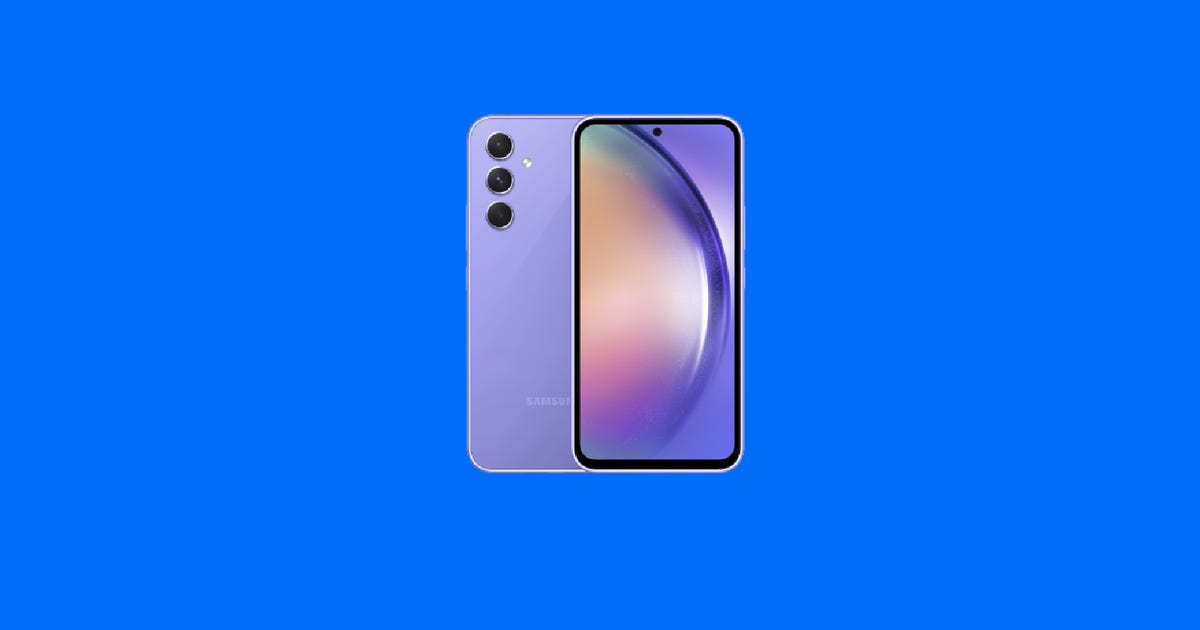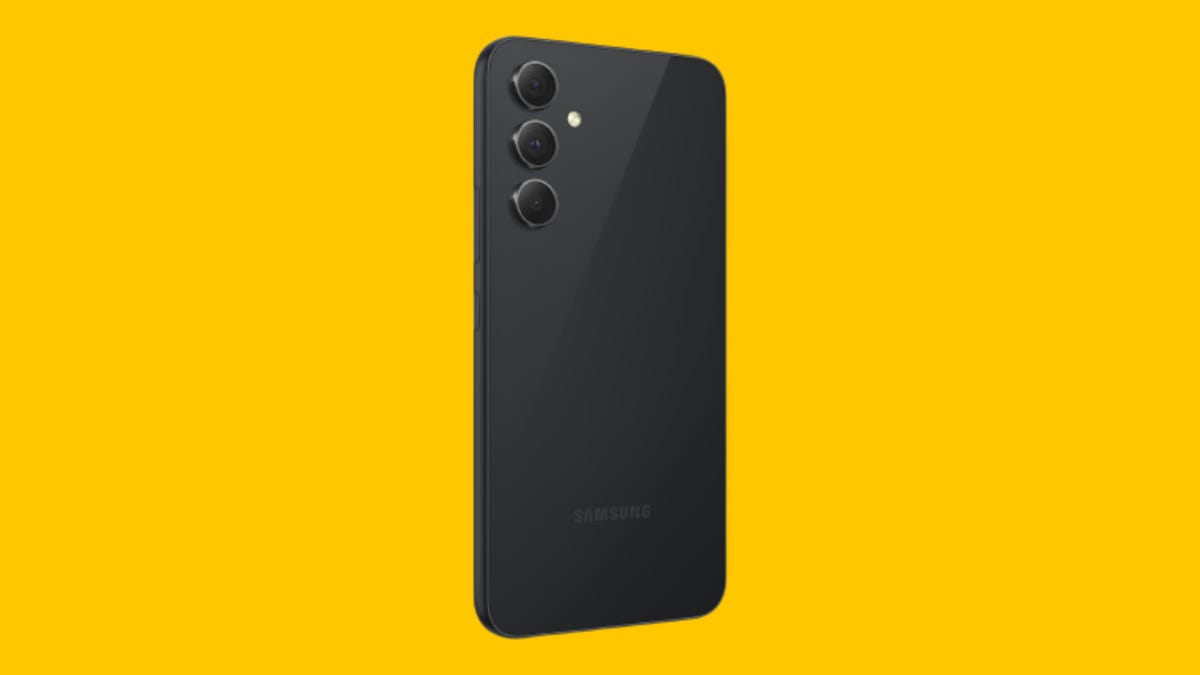
This story is part of Samsung Event, CNET’s collection of news, tips and advice around Samsung’s most popular products.
Samsung is expanding its lineup of A-series devices with the $450 Galaxy A54 5G, which launches on April 6 and is available for preorder starting March 30. It represents Samsung’s latest effort to capture the market for middle-tier smartphones, competing directly with Google’s $450 Pixel 6A.
The Galaxy A54 5G has a lot in common with last year’s Galaxy A53 5G. That phone punched above its weight in many ways except for its occasionally laggy performance, as I wrote in my review. Both phones have a 5,000-mAh battery, which matches the Galaxy S23 Ultra’s in capacity, a screen with a 120Hz adaptive refresh rate and 128GB of storage that’s expandable up to 1TB. They also have very similar screen sizes, with the Galaxy A54’s measuring 6.4 inches, making it just slightly smaller than the Galaxy A53’s 6.5-inch display. International pricing wasn’t immediately available. But the Galaxy A53 5G had the same US price at launch, and lists for £399 and AU$699 in the UK and Australia, respectively.
The biggest changes Samsung made to its new phone have to do with the camera. The Galaxy A54 5G has a 50-megapixel primary camera instead of the Galaxy A53’s 64-megapixel main sensor, although both phones have a 12-megapixel ultrawide camera and a 5-megapixel macro camera. Samsung instead seems to be emphasizing nighttime photography with the Galaxy A54 5G, although we won’t know how much of an improvement to expect until we are able to try it. The company also says the pixels in the Galaxy A54 5G’s sensor are larger than those in the Galaxy A53 5G’s camera, therefore requiring fewer megapixels. Like its predecessor, the Galaxy A54 5G also has a 32-megapixel front camera, but Samsung got rid of the rear-facing 5-megapixel depth camera.
The Galaxy A54 5G will run on an Exynos 1380 processor, which sounds like it might be the successor to the Exynos 1280 chip in last year’s phone. I’m curious to see whether this chip makes a difference, since performance was one of my few complaints about the Galaxy A53 5G. Like other recent Samsung phones, the Galaxy A54 5G will receive four generations of Android OS updates and five years of security updates.
Samsung’s flagship Galaxy S devices and its foldable phones may attract the most attention, but the company’s A-series devices have built a serious following. Two of Samsung’s A-series devices, the Galaxy A13 and Galaxy A03, made it into Counterpoint Research’s rankings of the top-selling phones in 2022, while the Galaxy S series was nowhere to be found.
The launch comes as Google has been competing with Samsung more aggressively on price in recent years. Google has its own A-series devices that offer some features from its flagship Pixel line at a more affordable price. The $450 Pixel 6A, for example, is one of the best-looking phones in its price range and inherits Google’s Tensor processor from the Pixel 6. It also offers a superior camera compared to the Galaxy A53 5G when taking photos in very bright or dim surroundings. Google launched the Pixel 6A last July after announcing it at its developer conference in May, so there’s a chance it could launch a successor in the coming months.

The Galaxy A54 5G has a 50-megapixel main camera.
Samsung
Beyond its A-series phones, Google also sells its flagship Pixel phones for significantly less than the list price of Samsung’s new Galaxy S phones. The Pixel 7, for example, starts at $600, while the Galaxy S23 begins at $800 without a trade-in discount.
Still, Samsung dominates the US market for Android phones, accounting for 20% of shipments in the fourth quarter of 2022 compared to Google’s 5%, according to Counterpoint Research.
The Galaxy A54 5G is also another sign that you no longer have to pay close to $1,000 to get features like a multilens camera and a screen with a high refresh rate. It builds on a theme that’s been prevalent throughout the industry in recent years, particularly on Android devices, as once-premium features like 5G, larger screens and advanced cameras have trickled down to cheaper devices.
And while Apple did release a third-generation of the iPhone SE last year for $429 that competes with Samsung and Google’s midrange offerings, the company isn’t expected to refresh its cheaper iPhone in 2023. Analyst Ming-Chi Kuo reported that a fourth iPhone SE is in development, but it’s not expected to arrive until 2024.

